Music production in games plays a pivotal role in shaping the immersive and captivating experience for players. With meticulous attention to detail, composers and producers collaborate to create the perfect blend of harmonies, melodies, and rhythms that seamlessly integrate with the game’s narrative, environment, and gameplay.
A well-crafted game soundtrack, born from the art of music production, becomes the soul of the virtual world, evoking emotions, heightening tension, and enhancing moments of triumph or sorrow. From heart-pounding action sequences to tranquil exploration, the music envelops players in a sonic journey that complements and enriches every aspect of the gaming adventure.
Through the art of music production, every musical note becomes an interactive element, adapting to the player’s actions and decisions, thus infusing a sense of dynamic responsiveness into the game world. The integration of music within the game engine ensures that players experience a seamless transition from one scene to another, allowing for a truly immersive and continuous narrative.
The impact of music production on the user experience is immeasurable. It can create an emotional connection between the player and the virtual universe, leaving a lasting impression even after the game is completed. Music helps players delve deeper into their characters, amplifies suspense during critical moments, and imparts a sense of accomplishment upon completing challenges.
Table of Contents
Here’s a step-by-step process for game music production along with some commonly used instruments.
1. Understanding the Game

In the realm of music production for games, understanding the game’s concept, storyline, gameplay mechanics, and overall theme is a foundational step. This process immerses composers and music producers in the game’s unique world, enabling them to create music that complements the atmosphere and emotions. By aligning the music with the game’s concept, composers can craft a distinctive sonic identity that transports players to new dimensions.
Moreover, a deep grasp of the narrative’s key events and character arcs allows for the creation of musical motifs that guide players’ emotional journey and heighten their gaming experience. Understanding the gameplay mechanics ensures that the music becomes an integral part of the player’s journey, dynamically adapting to their actions and intensifying in-game events. Ultimately, music production breathes life into the game world, forging an unforgettable adventure that resonates deeply with players.
2. Collaboration

Collaboration plays a pivotal role in creating exceptional soundtracks. Composers and music producers engage in effective communication with game developers, designers, and team members to grasp the envisioned musical direction. Regular discussions and feedback sessions facilitate a deeper understanding of the game’s emotional impact and thematic essence, enabling the creation of music that seamlessly blends with the gameplay and enhances player immersion.
Throughout the production process, ongoing collaboration ensures a cohesive and iterative approach. Composers regularly share progress and ideas, adapting the evolving soundtrack to align with the ever-changing game. This collaborative synergy weaves creativity into the game’s essence, culminating in a captivating audio landscape that harmoniously blends with the visuals, elevating the overall gaming experience to new heights.
3. Concept and Composition

The Concept and Composition process lays the foundation for an immersive gaming experience. Music producers embark on a creative journey to develop a music concept that aligns harmoniously with the game’s mood, setting, and narrative. By crafting main themes and character motifs, they infuse the virtual world with a captivating musical identity, evoking emotions and enhancing player engagement. This orchestration of musical elements breathes life into the game’s characters, locations, and key moments, creating a vivid musical tapestry that transcends mere accompaniment.
Through concept and composition, music production becomes a powerful catalyst that elevates the gameplay to extraordinary heights. Each musical piece, whether ambient soundscapes or battle music, plays a crucial role in shaping the gaming experience, weaving an unforgettable symphony within the game’s core. By immersing players in a world where music seamlessly mirrors their emotions and actions, concept and composition demonstrate the pivotal role of music production in enriching the immersive and captivating realm of gaming.
4. Instrumentation
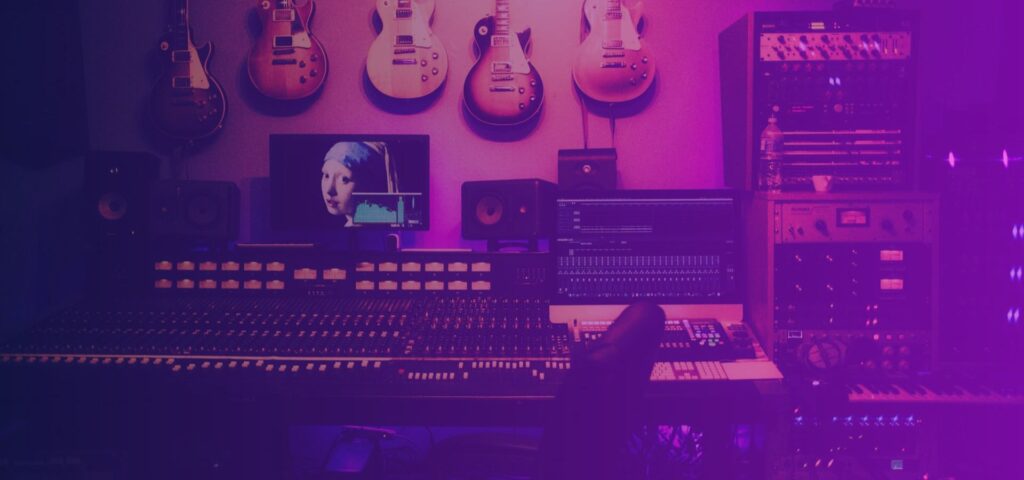
In music production for games, the selection of instruments and sounds, known as instrumentation, plays a vital role in shaping the game’s style and atmosphere. Depending on the game’s setting and genre, different instrument categories are commonly used to evoke specific emotions and create a captivating sonic identity. Orchestral instruments like strings, brass, woodwinds, and percussion add grandeur and drama to the game’s narrative, while electronic instruments such as synthesizers and drum machines infuse futuristic and edgy vibes.
Ambient music utilizes pads and atmospheric sounds, often incorporating ethnic instruments, to create ethereal soundscapes, while folk-inspired compositions evoke nostalgia and warmth using acoustic guitars, banjos, fiddles, and accordions. By carefully curating these instrumental elements, music production harmonizes with the game’s artistic vision, enhancing the immersive gameplay experience and resonating deeply with players’ emotions.
5. Digital Audio Workstation

The Digital Audio Workstation (DAW) plays a vital role as the composer’s creative ally. The choice of DAW is based on the composer’s familiarity and the software’s suitability for game music production. Ableton Live, Logic Pro, Cubase, FL Studio, and Reaper are popular DAWs used in the gaming industry, each offering unique strengths. Ableton Live excels in electronic music and live performances, while Logic Pro boasts an extensive virtual instrument library and user-friendly interface. Cubase stands out for its advanced MIDI editing capabilities, FL Studio for loop-based production, and Reaper for its lightweight design and adaptability.
Ultimately, the chosen DAW empowers composers to unleash their creativity, facilitating intricate melodies, complex arrangements, and immersive soundscapes that harmonize perfectly with the game’s narrative and gameplay. With the right DAW as their digital canvas, music production seamlessly integrates into the gaming world, conjuring mesmerizing symphonies that elevate the gaming experience to unparalleled heights.
6. MIDI Composition
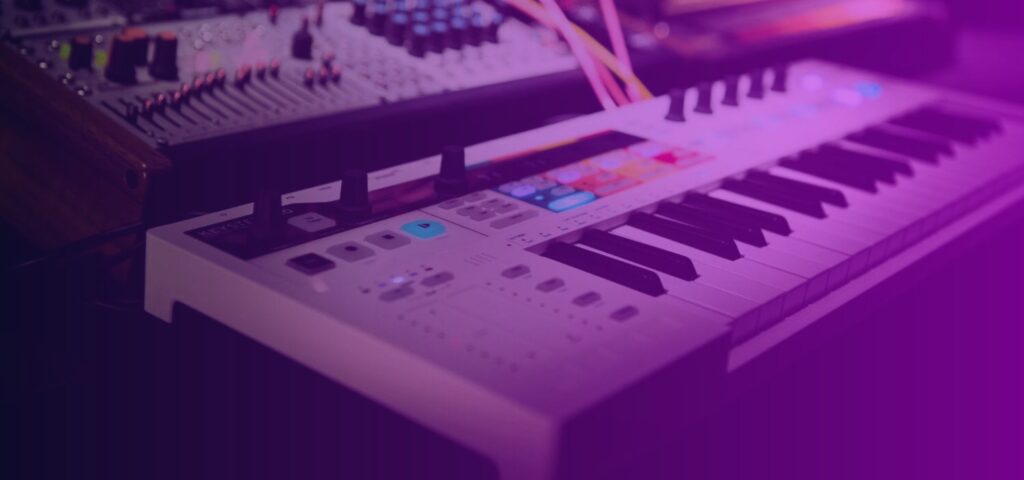
MIDI composition is a fundamental technique in music production that empowers composers to create intricate musical arrangements within their chosen Digital Audio Workstation (DAW). By utilizing MIDI (Musical Instrument Digital Interface), composers can easily edit and adjust the music, granting them unparalleled precision and flexibility. This digital representation of musical data allows for precise control over note pitch, duration, velocity, and instrument articulations, facilitating the seamless crafting of melodies, harmonies, and rhythms.
The use of MIDI within the DAW offers composers the freedom to experiment and refine their compositions effortlessly. It enables them to explore different instrument choices and experiment with various sounds, ensuring that each musical element aligns harmoniously with the game’s narrative, mood, and atmosphere. MIDI composition fosters a dynamic and iterative creative process, where composers can adapt their arrangements based on feedback from game developers and team members. Ultimately, MIDI composition brings the virtual orchestra to life, crafting a captivating symphony that enhances the player’s immersion and emotional engagement within the gaming experience.
7. Recording
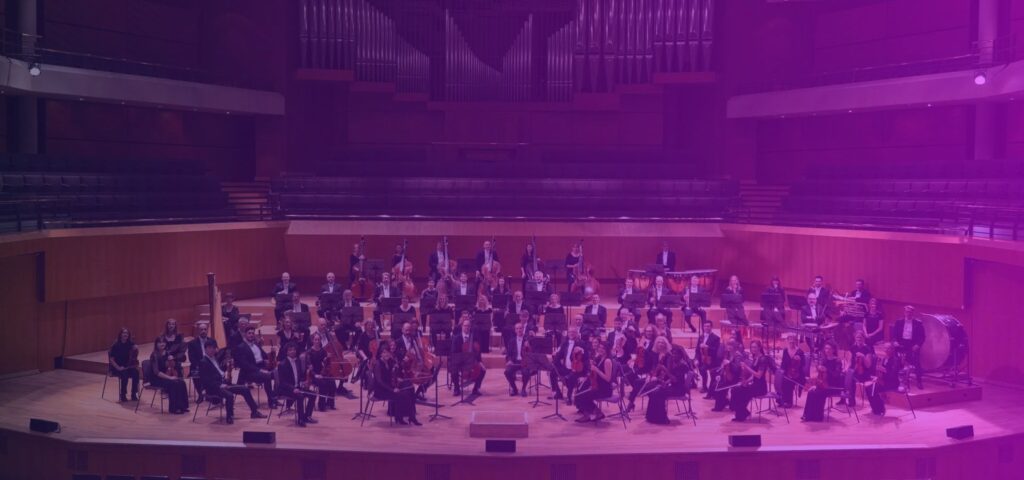
In music production, recording is a vital step, especially when incorporating live instruments into the composition. This process adds authenticity and emotional depth to the soundtrack, capturing the nuances and performances of skilled musicians. Live instruments, such as pianos, violins, and drums, bring organic life to the music, infusing it with warmth and resonance that resonates deeply with listeners.
Recorded performances seamlessly integrate into the composition within the Digital Audio Workstation (DAW), combining the expressive power of live elements with virtual instruments. This harmonious fusion enriches the audio landscape, enhancing the immersive gaming experience for players. The recording process offers endless artistic possibilities, allowing composers to experiment with arrangements and layering techniques, ensuring that every note complements the game’s narrative and atmosphere. Ultimately, recording exemplifies the artistry of music production, crafting an enchanting symphony that elevates the game to new heights of emotional engagement and immersion.
8. Sound Design
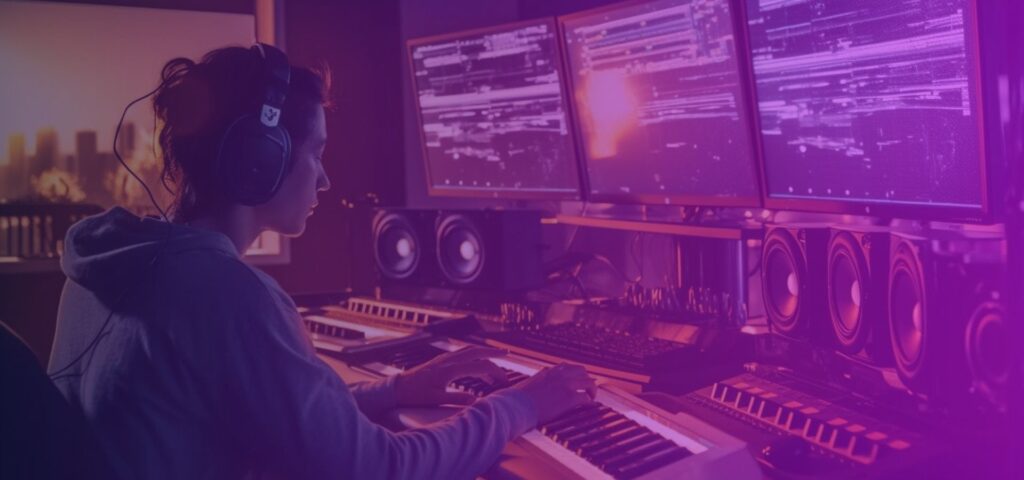
sound design plays a crucial role in enhancing the game’s audio landscape. It involves incorporating a variety of sound effects, such as environmental sounds, footsteps, and weapon noises, to immerse players in a multi-dimensional auditory experience. Environmental sounds, like rustling leaves or howling wind, bring realism and presence to the game’s world, while footsteps provide a sense of movement and grounding. Weapon noises intensify the action, heightening the impact of battles and creating an adrenaline-pumping experience.
Sound design harmoniously complements the musical composition, expanding the sonic palette and enriching the overall gaming experience. By seamlessly integrating sound effects with the music, the game becomes dynamically responsive to player actions, fostering a deep sense of immersion. This artful combination of sound design and music production paints a vivid audio landscape, creating an all-encompassing journey that resonates with life and authenticity, making the gaming adventure truly unforgettable.
9. Mixing
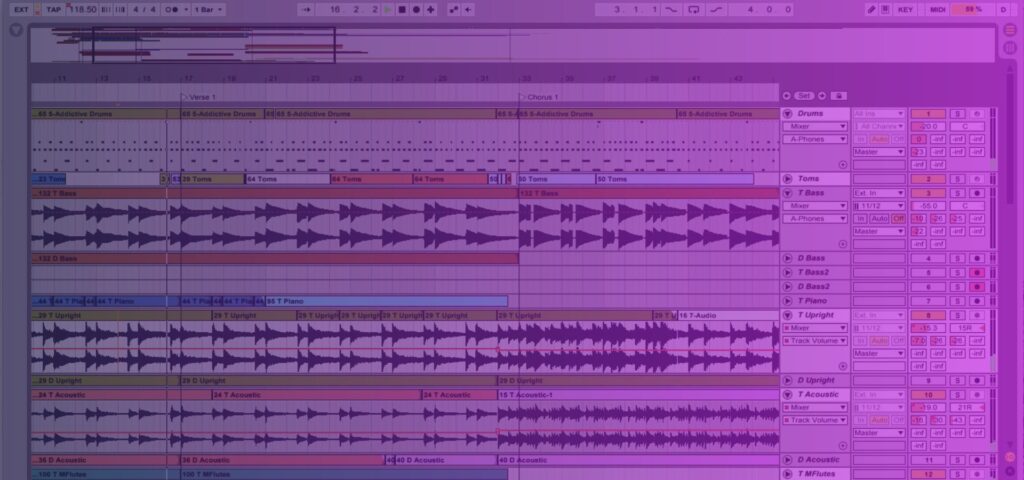
mixing is a vital stage where different instruments and elements are balanced to ensure clarity and cohesion in the final soundtrack. Careful attention is given to frequency balance, panning, and overall volume levels to create a harmonious sonic landscape. Achieving the perfect balance allows each instrument to shine with clarity and occupy its designated space within the composition. Spatial manipulation through panning enhances the immersive experience, enveloping listeners in a dynamic and multidimensional audio environment. Overall, the art of mixing brings life to the musical arrangement, transforming it into a polished and cohesive masterpiece that perfectly complements the game’s vision and narrative, elevating the gaming experience to new heights.
In the intricate process of music production, mixing is the final touch that ensures every musical element resonates harmoniously. It plays a pivotal role in capturing the essence of the game, leaving players immersed in a captivating symphony that reflects the artistry of music production. The skillful balance achieved in mixing enhances the emotional impact and engagement of the listener, solidifying the significance of music production in creating unforgettable gaming experiences.
10. Mastering

mastering is the ultimate step that enhances the composition, making it polished and cohesive across various playback systems. This critical phase involves employing compression and equalization techniques to control the dynamic range and fine-tune the frequency balance, respectively. The mastered track achieves a balanced and consistent sound, bringing out the best in the music by utilizing stereo widening, harmonic enhancement, and multi-band processing, creating an immersive and captivating experience for listeners.
Mastering ensures that the final version of the music shines across different mediums, from high-fidelity studio monitors to consumer-grade speakers or headphones. By applying expert techniques, the composition is transformed into a refined sonic landscape, capturing the essence of the game’s narrative and vision. Ultimately, the art of music production reaches its pinnacle with mastering, leaving players and audiences with an unforgettable and mesmerizing sonic journey that resonates harmoniously with the immersive world of gaming.
11. Integration

Integration is a vital step where composed music is seamlessly integrated into the game using the game engine or audio middleware. This process ensures that the soundtrack becomes an interactive and dynamic element of the gaming experience. Collaborating closely with game developers, the music production team ensures that the music transitions smoothly based on the game’s events and interactions, adapting to different scenarios and enhancing the emotional impact. Through this integration, the music becomes an evocative storytelling element, elevating the overall gameplay experience and immersing players into the virtual world.
Integrating the composed music into the game engine or audio middleware harmoniously fuses music and gameplay, creating a responsive and captivating journey for players. By synchronizing the music with the game’s dynamics, music production integration solidifies its powerful role in shaping unforgettable gaming adventures that resonate deeply with players, leaving a lasting impression on their gaming experience.
12. Testing and Iteration

Testing and Iteration play a crucial role in seamlessly integrating the composed music into the game’s gameplay. The process involves rigorous testing of the soundtrack in various in-game scenarios to ensure it complements the gameplay and enhances the overall player experience. Collaborating with game developers and testers, the music production team evaluates how the music harmonizes with different events, such as battles, exploration, and emotional moments, to create a cohesive and immersive gaming journey.
Player feedback is actively sought and utilized in this iterative process, enabling necessary adjustments and refinements to align the soundtrack with the game’s narrative, atmosphere, and emotional impact. Through testing and iteration, music production perfects its role as a powerful storytelling element that captivates players and elevates the immersive world of gaming, creating unforgettable experiences that resonate deeply with the gaming community.





I dugg some of you post as I thought they were handy very helpful